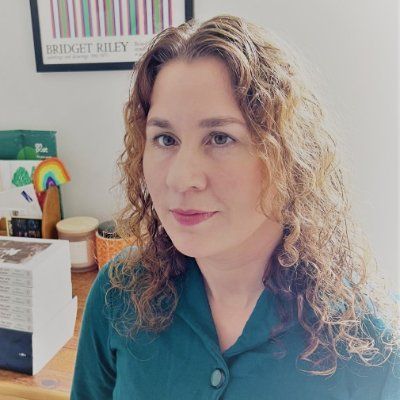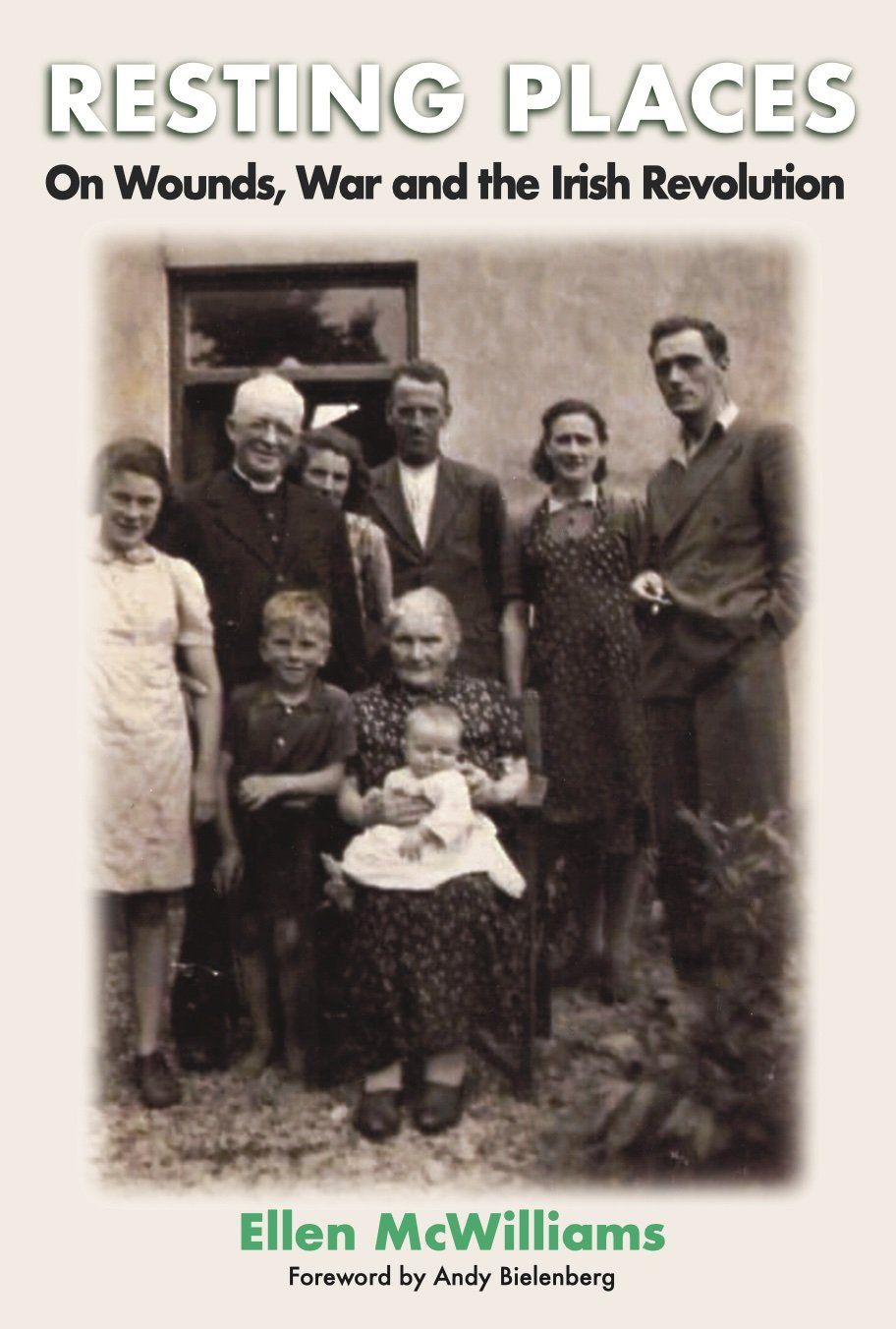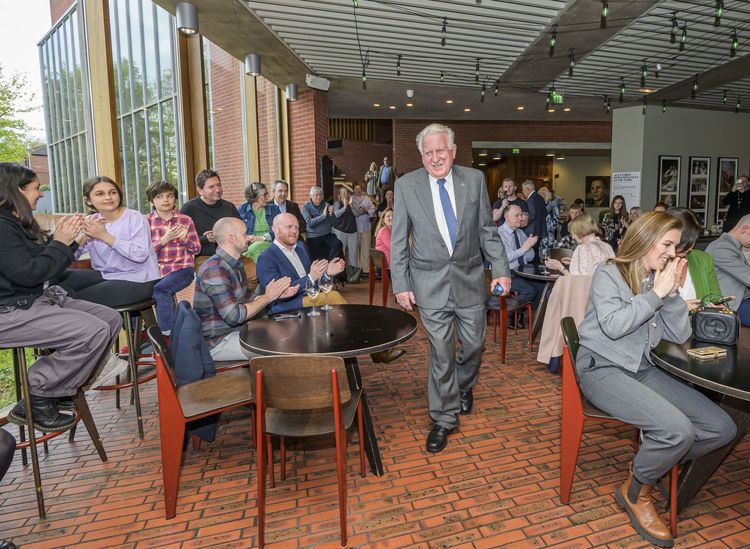“My grandfather, Francie, was just 14 when the Irish War of Independence broke out and played his part as a scout and messenger for his brother and the men he fought alongside in the Irish Republican Army,” Ellen McWilliams writes in “Resting Places: On Wounds, War and the Irish Revolution.”
She continues, “A family member shared the secret that he used to sleep in haylofts and under ditches, waiting and watching for British soldiers, always one step ahead of the enemy invader astray in a strange land. He was always mysterious to me, my fantastic go-between grandfather, running, running, running in bare feet across green fields, a powerful child-man outrunning and outwitting the might of the British Empire. Go on, My Son of Sedition!”
“My father was born in 1933, just 10 years after the end of the Irish Civil War,” McWilliams writes of Thady McCarthy, who was Francie’s son-in-law, “and once told me that when he was a child, the history was so close and raw, any time a memory of the ‘Black and Tans’ came tumbling violently into the room, a kind of fear and dread rose up like dust from the floor.”
There are photos of Francie contained in the book, including one of him with the author in 1984 on the day of her First Communion. There’s one of that older brother, Gerry Foley, on his wedding day in New York, and three of him in the 1970s in his role as a member in the Bronx of the Irish Republican Army veterans group Sean Oglaigh na hEireann.
“I was lucky to spend a semester teaching at Fordham University and thought of him often in my walks around the city,” McWillliams told the Echo. “I am a university lecturer by training and have a special interest in Irish migration and the Irish diaspora – I can now see this preoccupation was sparked by the emigration of my grandfather’s brothers and sisters – to England, the United States, and Canada – in the years and decades after the Irish revolution.”
Gerry’s involvement has been well-documented because he was imprisoned by the British authorities during the War of Independence and then by the Irish government during the Civil War; but the involvement of Gerry and Francie’s mother has a paper trail, too, in part because Ellen Foley, the author’s great-grandmother, herself wrote down an account of her activities as an activist with Cumann na mBan in her 1942 application for a military service pension.
“Resting Places: On Wounds, War and the Irish Revolution” reflects on her family members’ involvement in the revolution and what “they sacrificed and suffered, but is primarily concerned with the Dunmanway Massacre of April 1922.”
She writes in the book, “The facts of the history are this: 13 Protestant men and boys were murdered or disappeared in the townlands around Bandon, Enniskeane, Dunmanway and Clonakilty.
“When I try to read and understand the history of the Dunmanway Massacre, and the tumultuous events of 1921 that led up to it, I can only push past the clinical historical analysis, turn away from the unbearable detail of how these men died, and search out the story of who they were in life. The eldest of the men was in his 80s and the youngest was a boy of 16. They were part of a community that at the time enjoyed good relations with their Catholic neighbors. Many of them came from families that spoke Irish as well as English. They were drapers, chemists, solicitors, and farmers. A few of them had Catholic servants. While many families fled after the events of April 1922, some later returned, and others stayed in West Cork.
McWilliams continues, “I cannot speak for the descendants of the community that lost many of its men to the Dunmanway Massacre, and to the events that led up to it in 1921, but I can speak of them because I grew up in those square miles in the 1980s and they were among the people who helped to raise me. They were neighbors and friends who greeted any luck that came my way with the pleasure of an aunt or an uncle and are some of the first people I call to see when I go home. And yet, somehow, it took me half a lifetime to encounter the full details of the events of April 1922 and, for all my supposed academic training and that I teach modern Irish literature at a British university, to see the history that was so close to home.”
“Resting Places” has received enthusiastic endorsements from fellow academics as well as numerous glowing newspaper reviews. Lucy McDiarmid, author of “At Home in the Revolution: What Women Said and Did in 1916,” for instance, has written, “Ellen McWilliams has created a new literary form, a series of meditations on personal, ancestral, local, and national histories.”
The author and Irish Times columnist Fintan O’Toole said, “Written more in sorrow than in anger, Ellen McWilliams’s meditations on history, memory and the legacies of atrocity add up to a remarkable conversation between the past and the present, and between silence and articulation.”
Stephen Travers, a survivor of the Miami Showband Massacre in 1975, described “Resting Places” as a “beautifully fearless conversation about a hidden, unmentionable past that gently removes the obstruction which, for a century, caused us to stammer and speak in hushed tones.”
And Richard English, director of the Senator George Mitchell Institute for Global Peace, Security and Justice and author of the studies “Irish Freedom” and “Armed Struggle,” called McWilliams’s work an “evocative, highly original, vivid and personal book,” adding that it’s “compelling and fascinating throughout.”

Ellen McWilliams
Date of birth: 1977
Place of birth: Cork
Spouse: John McWilliams.
Children: James, 7.
Residence: Bristol, England.
Published works: A work of non-fiction, “Resting Places: On Wounds, War and the Irish Revolution.”
What advice do you have for aspiring writers?
I don’t know that I’m best placed to dispense advice when I’ve been working on drafts of various manuscripts for so long without finishing anything until now – all you can do is keep writing and trust that the stories that matter most will find their way to you. I have been working on a novel – a coda to the Big House novel that I hope will find readers in time – but I take nothing for granted.
Name three books that are memorable in terms of your reading pleasure.
Alice Munro’s “Lives of Girls and Women,” Jamaica Kincaid’s “Autobiography of My Mother,” and John McGahern’s “Amongst Women” – all books that offered an extended education as well as an emotionally profound reading experience.
What book are you currently reading?
Percival Everett’s “Erasure.” Everett’s wit and style mean I can never put his books down once I start reading and his satirical undoing of the vanities of academia and publishing are matched by few.
Is there a book you wish you had written?
William Trevor’s “The Story of Lucy Gault” – a work of slow-moving heartbreak and, to my mind at least, Trevor at his finest.
What book changed your life?
Edna O’Brien’s “The Country Girls.” It offered such vivid insight into the rural Ireland my mother’s generation was raised in – a world close in many ways to the one I grew up in. It made me appreciate all the more what women like my mother had to overcome in building a life for themselves and making a home for their children. I never stop appreciating the chances I have been given that my mother and women like her were denied – women of fierce intelligence and fortitude.
What is your favorite spot in Ireland?
The field above the house I grew up in. This is the place I spent so much time playing as a child, picking flowers and searching the ditches for blackberries in the summer, and rosehips in the autumn. It is in sight of the kitchen window and you can still see people moving about inside from halfway up the field. It’s one of the places I take my own small child to play when we go home.
You're Irish if...
You believe in James Joyce’s promise that “a nation is the same people living in the same place… or also living in different places.”
“Resting Places” is published by Beyond the Pale Books.









